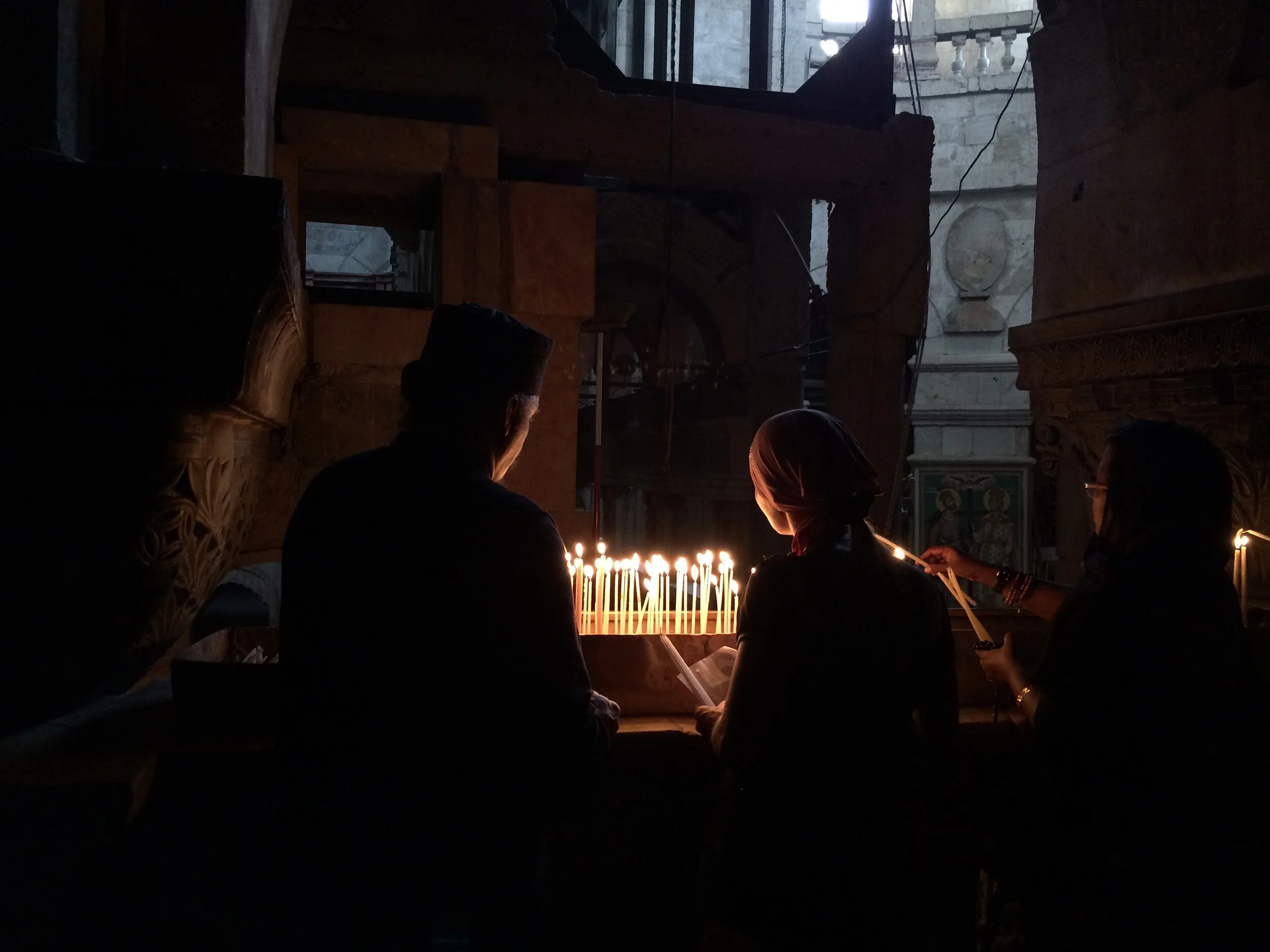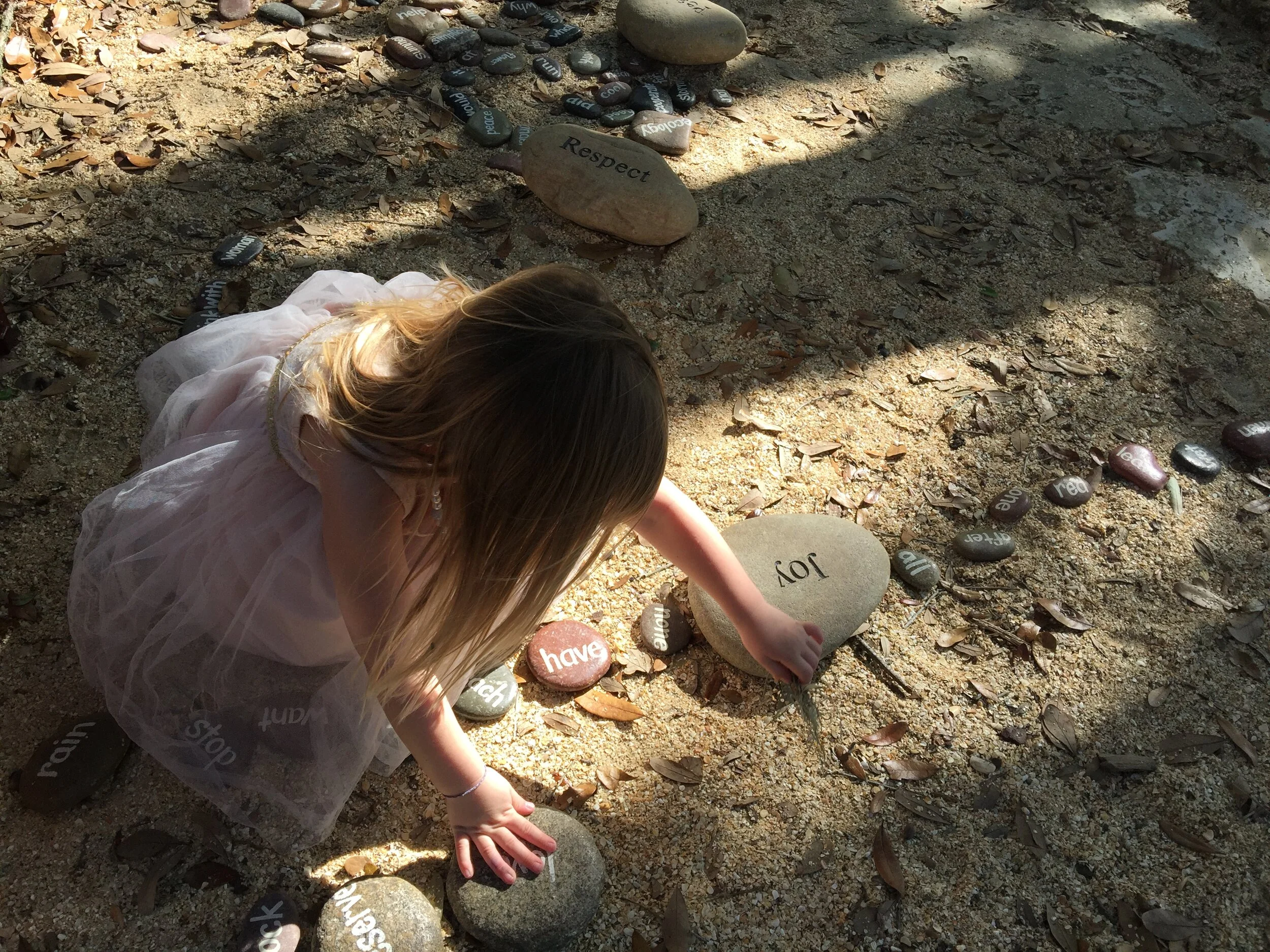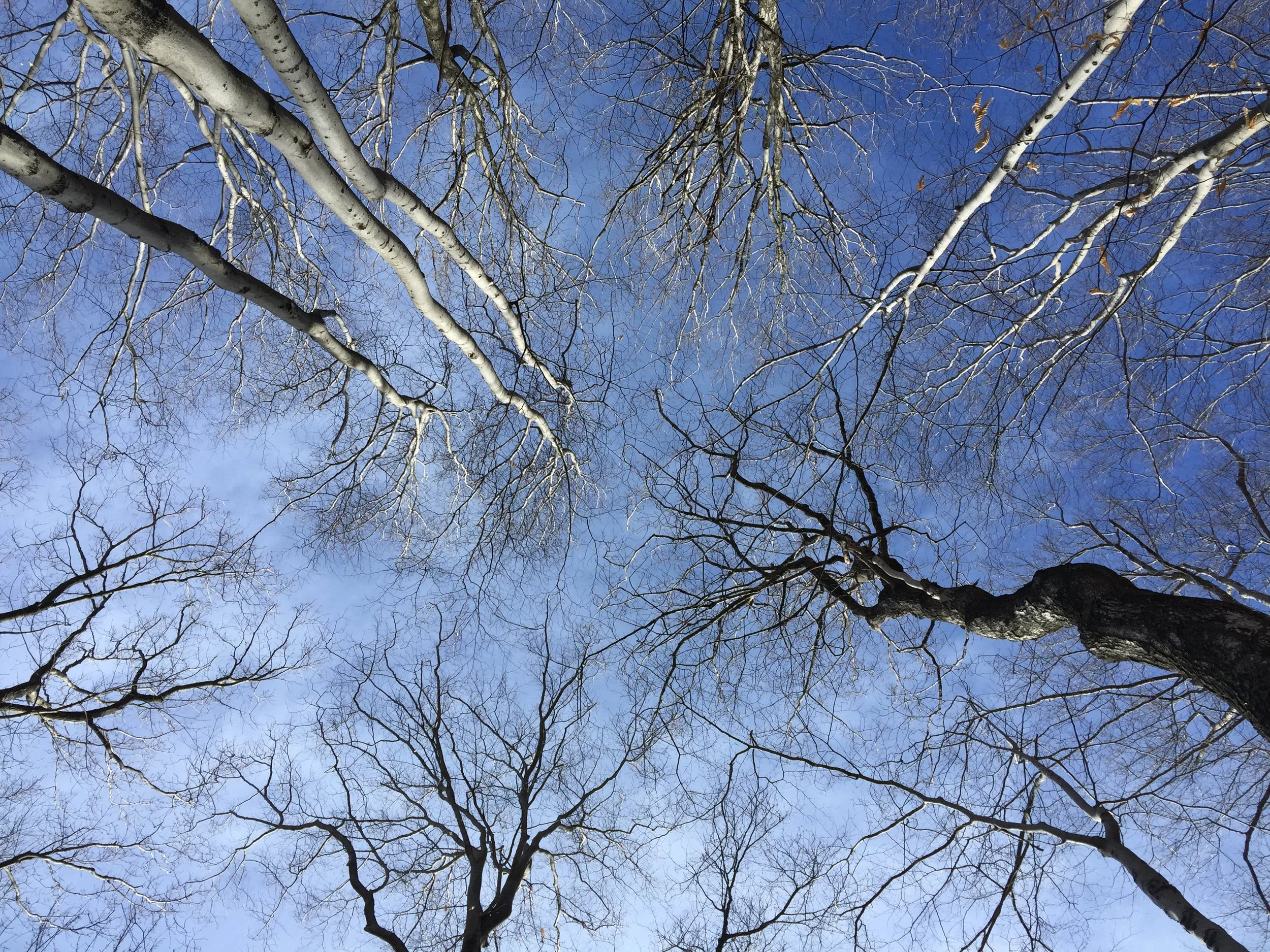Take a moment to read the philosophy behind Coucou Home. If you connect with it, then sign up for my monthly newsletter.
Church of the Holy Sepulchre, Jerusalem, Israel
In 2014, I was in a meeting in Verona, Italy, demo-ing a feature on Facebook when I was tagged in a post by my mother. My grandmother was dead. Six years later and only an hour-and-a-half away from where I received that news is Bergamo, the epicenter of the COVID-19 pandemic. I wonder how many people have been alerted of the death of a loved one via the company whose mission aspires to “bring the world closer together.” More importantly, how many people will be forced to grieve this way?
“More importantly, how many people will be forced to grieve this way?”
When my grandmother died, there was no funeral. It was her choice, a wish we could respect then and now, unlike other people who might prefer a celebration. My mother is one of those people. I used to cringe when she would describe what her own funeral would be like in terms of “laughter, joy” and “praise,” but now I can’t imagine it any other way. She embodies all of those words. She has the praise music picked out (“I’m Not Ashamed” by the Newsboys) and requested an altar call for non-believers. In the end, funerals reflect who we are. How will we cope with how COVID-19 is rewriting our endings?
I didn’t know about my grandmother’s cancer diagnosis until it had progressed into a stage where it had metastasized and fed on the rest of her body. The final act. Stage four. I remember the call from my mother well. Late spring. Torrential downpour in the Meatpacking District of Manhattan trying to hail a cab to JFK. As fate would have it, I had already planned a trip home. But the Fates don’t like to give without receiving.
“It’s the end,” my mom told me. An umbrella was useless. I threw up my hand. People passing by, if they even noticed, wouldn’t be able to tell the rain from my tears.
By the following morning, I was at my grandmother’s bedside. I was angry that there was a delay to bring me to her house in central Florida, a few hours from my parents’ home. What small luxuries we had then.
When I arrived, a couple of cousins, their dad, and my mom and dad were the only ones there. I have few memories of that day. I imagine it was sunny and hot since that’s how Florida always is in May. My cousins, whose father was waiting on news of their inheritance, kept to themselves. At some point, my mom ushered me into the area of the living room where my grandmother would breathe her last breath. She said little that I can recall now, but what I will never forget is our last embrace.
I had often imagined that a grandmother was someone who pinched your cheeks and smelled of baby powder. Not my grandmother. I have no memories of her hugging me to know what she smelled like, or getting close enough to me to pinch my cheeks. As an adult, I wrote her letters. Her replies read like a farmer’s almanac: “Put the tomatoes in. Weather’s hot.”
In the end, it was her stomach that was hot.
“The cancer’s here, hun,” she said, pressing my hand into a warm, dough belly. “Right here,” she pressed it harder as if cancer was bread you could knead into a beautiful loaf. It was a short visit. Before I left, I do know I hugged my grandmother, holding onto her until I could feel her pull away, the same elasticity as a good dough. What small luxuries we had then.
∆
A headline from Bergamo, Italy, last week read: “Coffins Pile Up in Churches, People in Their 80s Die Alone”. Unlike my grandmother, the Italians I knew embraced people a lot. Ever the cultural anthropologist, at one time in my life, I had a summer romance with a man from Bergamo. He was older, and as is the traditional Italian way, even in his 40s, he lived with his mother until a few years ago. Was she OK?, I wondered. Is she alone? My concern isn’t unfounded. Another Italian friend recently wrote to say he lost an aunt and four friends, adding these sharp words: “I couldn’t say goodbye to any of them.”
“I couldn’t say goodbye to any of them.”
Lombardy, the region where Bergamo is located, has reported over 2,000 deaths in a little over a month. One writer put it in perspective for us this way: “The local newspaper L’eco di Bergamo usually publishes two pages of death announcements every day, and now there are 10.”
Something is missing from the headlines though. Something that hasn’t hit people yet. But it will. It’s the question of how we will grieve in the time of COVID-19, because if there is one thing that is certain in life, it’s that there’s death. In fact, one statistic puts the number of people who die on a normal, non-pandemic day, at 150,000. A few days ago, my friend became a statistic. She didn’t die from complications caused by COVID-19. Like my grandmother, she died from cancer, too.
In the early days of the pandemic, in the halcyon days when it was still referred to as coronavirus, I read a report from Wuhan indicating that people who died at hospital would be cremated, their bones available for pick up, and nothing more. A countrywide ban made it impossible for loved ones to gather for a funeral, to grieve.
It seemed impossible then, the kind of thing you read about and then think, That would never happen here, and then it does and not just to people who die from complications of the virus. It happens to everyone, including my friend, Daun. When I got the call from my Dad, who had read about it on Facebook, I remembered my grandmother. The news of her death shared on the same platform, which I had only recently logged out of. I logged back in to see the memories of my friend flood her son’s announcement from around the world. For now, this would be the closest thing most of us would get to a gathering.
Unlike my grandmother who loathed the idea of any kind of get-together, the tragedy of the time we’re living in now is that Daun would have appreciated a service of remembrance. Not because it would have been focused on her, but because she is the kind of person who would know that gathering helps people grieve. Grief was something she understood.
A contemporary of my mother and the mother of my childhood friend, the spirit of our relationship was one of family. I loved Daun. After I had briefly moved back to my home state of Florida to reorient my life, Daun and I reconnected — this time as grown-ups. One of the first things I updated her with was the news of a miscarriage. It was a loss I had failed to process and one that in the loving space that Daun created, I could face.
"You will always be a mother,” she told me, clutching my hand, tears in her eyes. She took on my burden. My loss was hers.
When I finally got in touch with Daun’s son after hearing the news of her death, my instinct was to offer to get in a car, drive to where he was, and hug him. We would ugly cry together and wipe each other’s tears. But I couldn’t. Under the terror of COVID-19, the law of the land is to stay-at-home. To be alone with our grief.
“Under the terror of COVID-19, the law of the land is to stay-at-home. To be alone with our grief.”
One-hundred and fifty thousand people die everyday. How many lives do these people touch? Andrew Gleman did research for the New York Times that suggested on average, we know between 10 to 25 people. That’s nothing to say of people who, out of respect or admiration — and perhaps, in some rare cases, out of loathing — would attend our funeral. I remember attending the funeral of my childhood friend’s brother. He was a popular athlete at the local high school. Afterward, his sister grabbed the guest book, and in a move that sounds rather macabre in hindsight, we began to tally all his ex-girlfriend’s. We lost count.
Let’s say we take the modest of the two numbers and go with ten, that means that every day on average there are 1.5 million people mourning the loss of a loved one. Today, they are without adequate means to do so. My grandmother and other people like her aside, the way that many humans have processed death in our lives is via the ritual of a funeral, a rite pre-dating modern Homo sapiens to almost 300,000 years ago. In other words, it is ingrained in our humanity, and until last month, enacted every day by the way we burn loved ones on the Ganges River, queue to pay our respects to dignitaries lying in state, or gather to say our last words. To embrace. What small luxuries we had then.
∆
I wish I knew the answer to how we can remake an ancient ritual that defines us as humans. Posting a eulogy to Facebook doesn’t seem enough. Maybe it is for you. It’s not for me. Some people might delay services where they can, but the funeral rites of a few religions require swift burial of their dead.
Daun was a devout Bahá’í, a convivial religion whose hallmark events are called “firesides”, gatherings that bring people together in conversation and song. They are the sort of thing where people in their togetherness can fellowship and feel renewed in God’s love, especially in dark times. But what of the dark times when we can’t gather? Do we sing alone? I know I’m not prepared for a solo.
Bahá’í funerals are expected to take place within twenty-four hours of a believer’s death. Like all Bahá’í funerals, Daun’s service would include the only prayer in the religion that is permitted to be read as a group, the “Prayer for the Dead”. Normally, people would gather and select one person to recite the prayer while all others present silently listen.
The group mourning Daun in-person will be smaller — not for any other reason but that the government mandates it. Pre-COVID-19, I’d imagine hundreds would show up to honor my anam cara, to share the burden of our grief, to embrace. Since I’m not among those able to gather, I will say Daun’s prayer alone and do what humans have always done best, adapt.
∆
Coucou Home is a place to feel refreshed, find heart sustenance, and heal your spirit. For this reason, it will always be ad-free. If you enjoy my work and value creativity in the world, please consider becoming a patron by making a donation in any amount or buying my work. Your support is greatly appreciated! Thank you!








